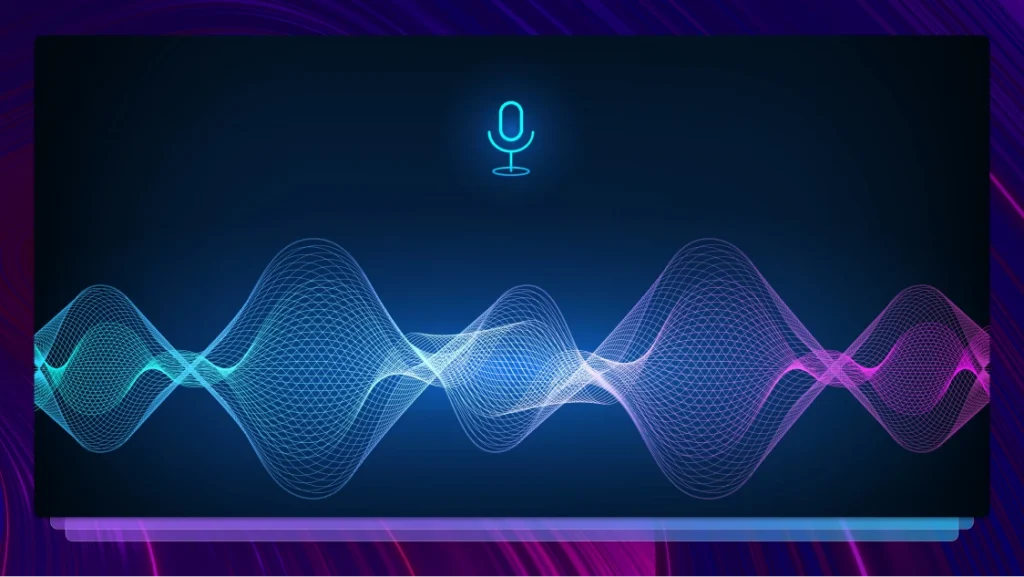Why Voice ID Is the New Digital Fingerprint
Uncover the power of Voice ID as the new digital fingerprint. Learn more about its impact on authentication and privacy in the AI era.

Every time you speak, you’re using about 100 muscles in your chest, neck, jaw, tongue, and lips to share a remarkable number of details about yourself. That’s what makes every person’s voice unique — and it’s also why voice data holds such great potential for digital identification.
The pitch and timbre of your voice intuitively communicates not just the meaning of what you say, but also who you are and how you’re feeling. (If you have a strong accent, it might even reveal where you live or where you were raised!)
Much like we use our thumbprints and faces to unlock our devices and log into our accounts, voice ID has proven to be an effective way to verify our identities. As a new wave of digital rights regulation calls for tech companies to label and detect AI generated content, voice data is set to play an even bigger role in digital identification and authentication.
Like all rapidly emerging technologies, voice ID may seem like it’s suddenly popping up out of nowhere, so you might wonder how it works and why it’s important. Here’s what to know about why voice identification is the new digital fingerprint.
How Does Voice ID Work?
Voice ID can be broken into two methods: text dependent and text independent identification. With text dependent voice ID, you say a specific, predefined phrase to confirm your identity. And with text independent voice ID, you simply say anything and the authentication system analyzes your voice to match it with the vocal characteristics of your voiceprint.
In both cases, advanced automatic speech recognition (ASR) models are deployed to recognize you and your voice. While different models will function in different ways, generally this means creating a voice template, or “voiceprint”, based on several samples of your speech. It's a great example of how AI is taking your data privacy and security seriously.
Why Is Voice ID So Important Right Now?
This year, a wave of regulations in Europe and the U.S. are establishing important rules for detecting and labeling AI generated content. As tech companies develop tools to meet these new rules, voice ID will play an essential role in authentication — especially as the market for voice and speech recognition is expected to grow to $20 billion by 2026.
Today, you’re most likely to come across voice ID systems when you call your bank or healthcare provider — it may have even replaced your traditional password. The financial services industry has used voice identification for almost a decade, particularly in recent years due to significant improvements in speech tech.
You may have set up a voiceprint with your bank, or a passphrase for when you call your health insurance provider. These kinds of voice ID help businesses identify customers and prevent fraud, alongside other multifactor authentication methods like a PIN or questions about recent transactions.
But the possibilities of voice ID extend much further than that. Creators and musical artists could use voice ID to add a stamp of authenticity to their content, so audiences know that it’s legitimate. Anti-spam software could integrate voice ID to confirm a caller’s identity before you pick up, like a supercharged version of caller ID. Sensitive or confidential material could be locked to specific voiceprints, adding a strong layer of security and privacy.
Can Voice ID Be Tricked With Deepfakes?
The rise of generative AI has also sparked concerns about deepfake audio, which use AI-generated speech to replicate an actual person’s voice and impersonate them. While deepfakes have been used to trick voice authentication systems, multifactor authentication is an effective way to curb these deepfake attacks.
It’s gotten remarkably easy to create a synthetic version of a real human voice, which is why digital privacy has stepped into the forefront of these conversations. Laws and regulations like the EU AI Act, the California Consumer Privacy Act, the Biometric Information Privacy Act, and the Children’s Online Privacy Protection Act are defining not just digital rights for the AI era, but also how biometric data needs to be stored and safeguarded.
Heading
Heading 1
Heading 2
Heading 3
Heading 4
Heading 5
Heading 6
Lorem ipsum dolor sit amet, consectetur adipiscing elit, sed do eiusmod tempor incididunt ut labore et dolore magna aliqua. Ut enim ad minim veniam, quis nostrud exercitation ullamco laboris nisi ut aliquip ex ea commodo consequat. Duis aute irure dolor in reprehenderit in voluptate velit esse cillum dolore eu fugiat nulla pariatur.
Block quote
Ordered list
- Item 1
- Item 2
- Item 3
Unordered list
- Item A
- Item B
- Item C
Bold text
Emphasis
Superscript
Subscript

Subscribe to The Rev Blog
Sign up to get Rev content delivered straight to your inbox.




